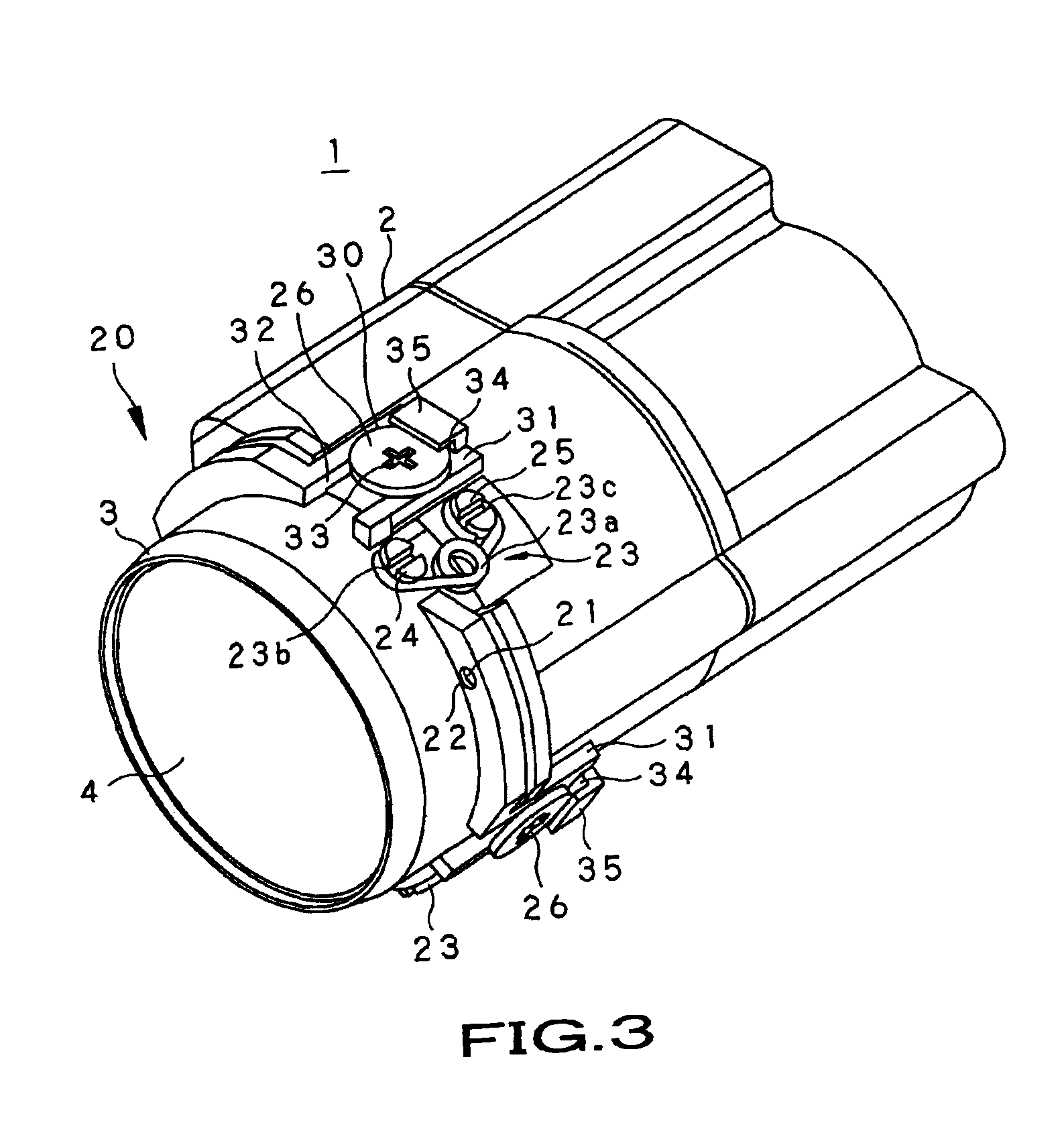Lens centering mechanism, lens apparatus and imaging apparatus
a technology of lens and centering mechanism, which is applied in the direction of camera focusing arrangement, printers, instruments, etc., can solve the problems of obstructing the centering operation, reducing the overall size of the apparatus, and the risk of the image of the component parts being taken into the chart image, so as to facilitate the optimal adjustment of the tilt, facilitate the centering operation, and pick up satisfactorily
- Summary
- Abstract
- Description
- Claims
- Application Information
AI Technical Summary
Benefits of technology
Problems solved by technology
Method used
Image
Examples
Embodiment Construction
[0054]Referring to the drawings, a lens centering mechanism, a lens apparatus and an imaging apparatus, embodying the present invention, will be explained in detail.
[0055]Referring first to FIG. 3, a lens apparatus 1, embodying the present invention, is a so-called lens barrel, configured for forming an image of an object by a plural number of lenses mounted on a common optical axis within a main body unit of the lens barrel 2. A solid-state imaging device for photographing an image of the object, formed by the plural number of lenses, is mounted on the back surface of the lens barrel, for constructing an imaging apparatus embodying the present invention.
[0056]Specifically, the main body unit of the lens barrel 2 is formed to substantially a cylindrical shape from a black resin material, exhibiting certain strength, mass-producibility and light shielding properties, for example, a polycarbonate resin containing glass fibers. On the front side of the main body unit of the lens barrel...
PUM
 Login to View More
Login to View More Abstract
Description
Claims
Application Information
 Login to View More
Login to View More - R&D
- Intellectual Property
- Life Sciences
- Materials
- Tech Scout
- Unparalleled Data Quality
- Higher Quality Content
- 60% Fewer Hallucinations
Browse by: Latest US Patents, China's latest patents, Technical Efficacy Thesaurus, Application Domain, Technology Topic, Popular Technical Reports.
© 2025 PatSnap. All rights reserved.Legal|Privacy policy|Modern Slavery Act Transparency Statement|Sitemap|About US| Contact US: help@patsnap.com



